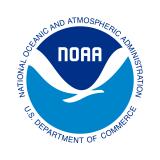Drought Task Force I Assessment Report: Causes and Predictability of the 2011 to 2014 California Drought
California statewide precipitation during the last three winters (November-April 2011/2012 through 2013/2014) ranked the second lowest since official measurements began in 1895. Only the consecutive three-year period of 1974/1975 through 1976/1977 was drier. In this report, the authors analyze the causes and predictability of the California drought during these three consecutive rainy seasons observations and ensembles of simulations conducted with seven atmosphere models forced by observed sea surface temperatures.
What factors caused the California Drought?
- Weather conditions were key to explaining the event - a high pressure ridge off the West Coast diverted the track of storms during all three winters, typical of historical droughts.
- West Coast high pressure was rendered more likely during 2011-14 by effects of sea surface temperature patterns over the world oceans.
- The drought's first year (2011/2012) was likely the most predictable, when La Niña effects largely explained high pressure off the West Coast, though simulations indicate that high pressure continued to be favored due to ocean effects in 2012-14.
This report was produced as part of the NOAA Drought Task Force I organized by the NOAA Modeling, Analysis, Predictions, and Projections Program (MAPP) in partnership with the National Integrated Drought Information System (NIDIS).










